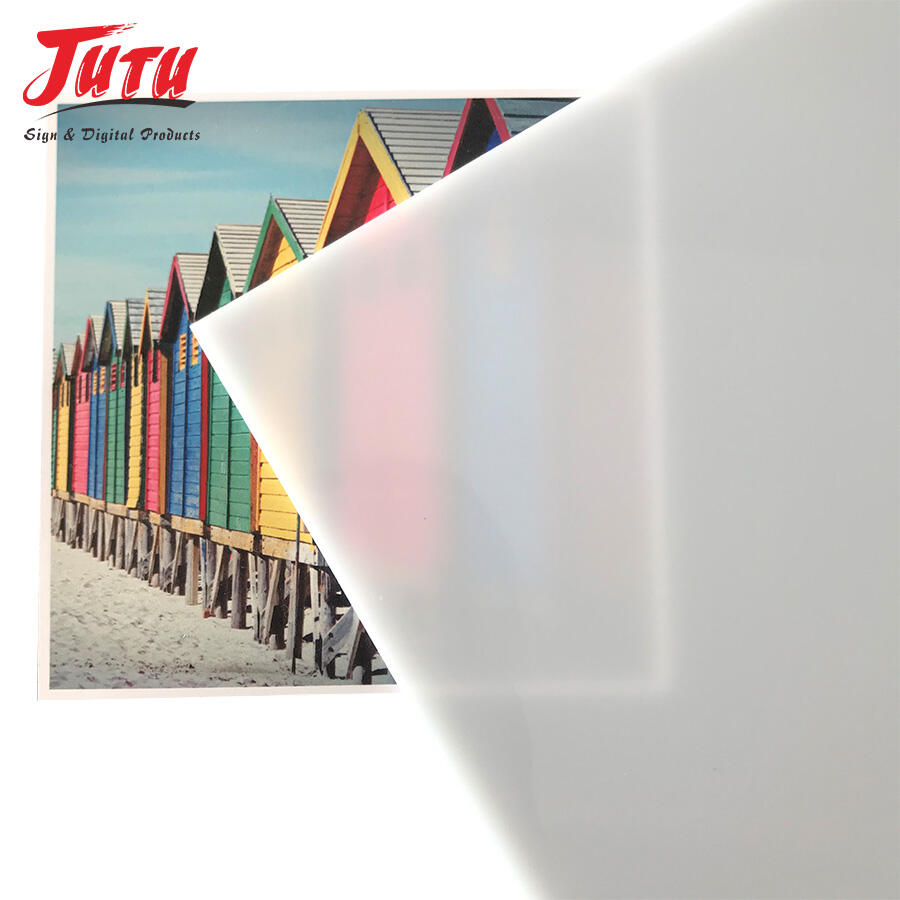The Science Behind Acrylic Board Manufacturing
Material Composition: Crafting Transparency
What makes acrylic boards so transparent and strong? Let's start with the main ingredient: Polymethyl Methacrylate or PMMA for short. This synthetic material is famous for being crystal clear while still tough enough for many uses. The transparency level gets pretty close to regular glass too, transmitting around 90-92% of available light. Because of this property, people use acrylic sheets all over the place from lighting installations and store signs to some specialized optical equipment. When these boards need to last outdoors though, manufacturers typically add stuff like UV stabilizers during production. These additives help keep the acrylic looking good longer when exposed to sun rays day after day. That's why PMMA remains popular whether installed inside buildings or out in the elements where it can withstand weather conditions without losing its clear appearance.
Fabrication Techniques for Enhanced Strength
Making acrylic boards involves several different fabrication approaches that boost both strength and ability to handle complicated shapes. Two main production methods stand out: extrusion and casting. Extruded boards generally hold up better against outdoor conditions because of how they're made, while cast acrylic tends to have that crystal clear look people want for display purposes. Thermal forming is another advanced technique where heat bends the material into all sorts of complex shapes without breaking down its core strength, which explains why so many custom projects rely on this method. Edge work matters too. Precision machining smooths those rough spots after cutting, which cuts down on cracks when pressure builds up over time and makes sure the boards don't shatter easily during installation or regular use. All these steps together result in acrylic products that look great and last long enough for everything from building facades to retail displays across multiple industries.
Why Choose Acrylic Over Traditional Materials?
Superior UV Resistance and Clarity vs. Glass
Compared to regular glass, acrylic has some real benefits worth considering. One big plus is how it handles sunlight better than glass does. Most people know that old glass tends to turn yellow after sitting in direct sun for too long, but acrylic stays clear even after years outdoors. Plus, acrylic weighs way less than glass panels of similar size. This makes installation much simpler for contractors, which cuts down on those expensive labor bills when putting things together. Anyone who has ever installed glass knows what I mean here. When it comes to places where looks matter, like museum displays or commercial skylights, acrylic actually lets through more light while still looking crystal clear. That kind of transparency really makes exhibits pop and gives buildings that modern feel so many architects are going for these days.
Impact Resistance: Outperforming PVC
In terms of how well it handles impacts, acrylic really stands out compared to PVC. The material can take quite a beating before cracking or shattering, which is why many contractors prefer it for places where people move around a lot, like busy construction zones or office buildings with heavy foot traffic. Safety regulations matter a lot in these environments after all. Tests show that acrylic panels stay whole even when subjected to significant force, something that matters a great deal when there's potential for accidents. Plus, architects love working with acrylic because they get so much creative freedom while still maintaining structural integrity. We've seen everything from sleek storefront displays to massive interior partitions made from this stuff, all looking amazing while holding up against daily wear and tear.
Key Applications Driving Industry Demand
Architectural Marvels: From Skylights to Partitions
More and more architects are turning to acrylic these days because it's light weight and really flexible when it comes to design possibilities. We see this stuff all over the place actually, especially in big skylights and those clear walls inside offices and hotels. The way acrylic lets sunlight through makes rooms feel so much brighter and welcoming compared to traditional glass options. From small homes to massive commercial developments, people are starting to notice how versatile acrylic can be for different building needs. Architects love working with materials that look good but also stand up to wear and tear, and acrylic fits the bill pretty well here. Sure, there are other materials out there too, but few combine looks with lasting power quite like acrylic does in today's construction projects.
Retail Displays and Durable Signage Solutions
More and more stores are turning to acrylic for their display needs because it lasts longer and looks great too. The signs made from acrylic stay colorful and catch people's eyes, which helps brands stand out on crowded shelves. Retailers love how these displays can grab attention while still holding up against constant handling and traffic. Market research shows around 70% of modern retailers now use some form of acrylic in their window displays or store interiors. What makes acrylic so appealing? It lets designers get creative with shapes and colors that would be impossible with glass, yet won't crack or break easily. Many shop owners have found that investing in quality acrylic displays pays off over time since they don't need replacing as often as other materials.
Selecting the Right Acrylic Board Manufacturer
Certifications and Quality Assurance Standards
Looking for an acrylic board manufacturer? Put ISO certification at the top of your checklist. Why? Because these certs mean the company has met certain quality benchmarks across their entire production line. Most manufacturers with proper QA systems actually test their boards regularly for things like transparency, how strong they are when bent, and whether they hold up under sunlight exposure. This matters because nobody wants their signage warping after just a few months outside. And let's face it, when a business spends good money on materials, they want assurance that what arrives isn't going to fail prematurely. That's where those industry seals come in handy too. They act as third party validation that yes, this company really does produce reliable products worth investing in.
Customization Capabilities for Specialized Projects
When working on specialized projects, finding a manufacturer that can handle custom work really matters. Most good quality manufacturers will let clients adjust things like dimensions, material thickness, and even colors to match exactly what they need. This kind of flexibility helps create products that not only work well but also look great in their intended setting. The best results usually come from when clients actually sit down with manufacturers early on in the process. This back and forth allows for creative solutions that just wouldn't happen otherwise, and ultimately leads to finished goods that fit those unique project needs without any compromises.

Sustainability in Modern Acrylic Production
Eco-Friendly Material Innovations
The acrylic sector is making some pretty big moves toward greener materials these days, with companies increasingly focused on eco-friendly options. One major breakthrough comes from incorporating plant-based ingredients into acrylic manufacturing, cutting down reliance on oil derivatives significantly. Many producers are now pouring money into energy-saving techniques too, which naturally brings down their overall carbon emissions. Studies show that these new materials work just as well as conventional acrylics when it comes to transparency and durability, yet they leave a much smaller mark on the environment. What we're seeing here isn't just good marketing either it represents genuine progress toward sustainability goals that match up with worldwide initiatives aimed at reducing greenhouse gases across industries.
Recycling Initiatives and Waste Reduction
Waste reduction has become a major concern in acrylic manufacturing, and recycling is playing a big role here. When companies set up proper recycling systems, they cut down on how much trash gets created while making their products. The main goal is to collect leftover acrylic scraps from production lines so they can be turned back into raw materials for new items instead of going to landfills. Some factories have managed to reduce their waste output by over 40% through these methods according to recent studies. What makes this approach work well is that recycled material often costs less than buying brand new supplies. As more businesses adopt these practices, we're seeing improvements not just in environmental impact but also operational costs throughout the acrylic board sector.
FAQ Section
What makes acrylic boards different from glass?
Acrylic boards offer superior UV resistance, don't yellow over time like glass, and are lightweight, which makes them easier to handle and install.
Are acrylic boards more impact-resistant than PVC?
Yes, acrylic boards are significantly more impact-resistant than PVC, making them a safer option for high-traffic and sensitive design spaces.
How are eco-friendly materials used in acrylic production?
Eco-friendly materials are utilized in acrylic production by using bio-based ingredients and employing energy-efficient manufacturing processes to reduce carbon footprints.
What should I look for in an acrylic board manufacturer?
Look for manufacturers with ISO certifications and robust customization capabilities to ensure quality and meet specific project needs.

